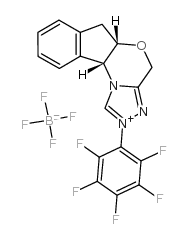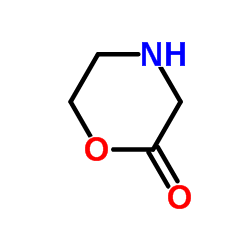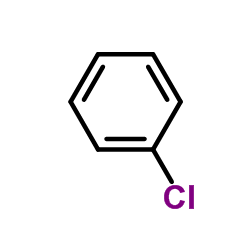740816-14-2
| Name | 2-Pentafluorophenyl-6.10b-dihydro-4H,5aH-5-oxo-3,10c-diaza-2-azoniacyclopenta[c]fluorene tetrafluoroborate |
|---|---|
| Synonyms |
Rovis triazolium catalyst
MFCD08459334 |
| Melting Point | 235ºC (dec.) |
|---|---|
| Molecular Formula | C18H11BF9N3O |
| Molecular Weight | 467.09600 |
| Exact Mass | 467.08500 |
| PSA | 30.93000 |
| LogP | 4.19960 |
|
Section 1: Product Identification (5aS,10bR)-(-)-5a,10b-Dihydro-2-(pentafluorophenyl)-4H,6H-indeno[2,1-b][1,2,4]trizolo[4,3-d][1,4]oxazinium Chemical Name: tetrafluoroborate, min. 98% CAS Registry Number:740816-14-2 Formula:[C18H11F5N3O]+BF4- EINECS Number:none
Chemical Family:organic amine salt 2-Pentafluorophenyl-2,5a,6,10b-tetrahydro-4H-5-oxa-2,3-diaza-10c-azonia-cyclopenta[c]fluorene;tetrafluorobo Synonym: rate Section 2: Composition and Information on Ingredients IngredientCAS NumberPercentACGIH (TWA)OSHA (PEL) Title compound740816-14-2100%2.5mg/m3 (as F)2.5mg/m3 (as F) Section 3: Hazards Identification Emergency Overview:Irritating to skin, eyes and respiratory tract. Primary Routes of Exposure:Ingestion, inhalation, skin, eyes Eye Contact:Dust causes irritation to eyes Skin Contact:Causes irritation to skin Inhalation:Dust is irritating to the nose, mucous membranes and respiratory tract. Ingestion:No information available on the physiological effects of ingestion. May be harmful if swallowed. Acute Health Affects:Irritating to skin, eyes and respiratory tract. Product contains fluorine which, under certain conditions of use, decomposition or metabolism, may generate Chronic Health Affects:fluoride ion causing nausea, vomiting, labored breathing, hypocalcaemia, deterioration of bone and tooth structure and kidney and liver damage. NTP:No IARC:No OSHA:No SECTION 4: First Aid Measures Immediately flush the eyes with copious amounts of water for at least 10-15 minutes. A victim may need Eye Exposure: assistance in keeping their eye lids open. Get immediate medical attention. Wash the affected area with water. Remove contaminated clothes if necessary. Seek medical assistance if Skin Exposure: irritation persists. Remove the victim to fresh air. Closely monitor the victim for signs of respiratory problems, such as difficulty Inhalation: in breathing, coughing, wheezing, or pain. In such cases seek immediate medical assistance. Seek medical attention immediately. Keep the victim calm. Give the victim water (only if conscious). Induce Ingestion: vomiting only if directed by medical personnel. SECTION 5: Fire Fighting Measures Flash Point:no data Autoignition Temperature:no data Explosion Limits:no data Extinguishing Medium:carbon dioxide, dry powder or foam If this product is involved in a fire, fire fighters should be equipped with a NIOSH approved positive pressure Special Fire Fighting Procedures: self-contained breathing apparatus and full protective clothing. Hazardous Combustion andIf involved in a fire, this material may emit irritating fumes. Decomposion Products: Unusual Fire or Explosion Hazards: No unusual fire or explosion hazards. SECTION 6: Accidental Release Measures Spill and Leak Procedures:Small spills can be mixed with vermiculite or sodium carbonate and swept up. SECTION 7: Handling and Storage Handling and Storage:Store in a tightly sealed container. Keep in a cool, dry, well ventilated place. SECTION 8: Exposure Controls and Personal Protection Eye Protection:Always wear approved safety glasses when handling a chemical substance in the laboratory. Skin Protection:Wear protective clothing and gloves. Ventilation:Handle the material in an efficient fume hood. If ventilation is not available a respirator should be worn. The use of respirators requires a Respirator Respirator: Protection Program to be in compliance with 29 CFR 1910.134. Ventilation:Handle the material in an efficient fume hood. Additional Protection:No additional protection required. SECTION 9: Physical and Chemical Properties Color and Form:light brown powder Molecular Weight:467.1 Melting Point:no data Boiling Point:no data Vapor Pressure:no data Specific Gravity:no data Odor:none Solubility in Water:insoluble SECTION 10: Stability and Reactivity Stability:air and moisture stable Hazardous Polymerization:no hazardous polymerization Conditions to Avoid:none Incompatibility:strong oxidizing agents Decomposition Products:carbon dioxide, carbon monoxide, organic fumes, borates and fluorinated by-products SECTION 11: Toxicological Information RTECS Data:No information available in the RTECS files. Carcinogenic Effects:no data Mutagenic Effects:no data Tetratogenic Effects:no data SECTION 12: Ecological Information Ecological Information:No information available SECTION 13: Disposal Considerations Disposal:Dispose of according to local, state and federal regulations. SECTION 14: Transportation Shipping Name (CFR):Non-hazardous Hazard Class (CFR):NA Additional Hazard Class (CFR):NA Packaging Group (CFR):NA UN ID Number (CFR):NA Shipping Name (IATA):Non-hazardous Hazard Class (IATA):NA Additional Hazard Class (IATA):NA Packaging Group (IATA):NA UN ID Number (IATA):NA SECTION 15: Regulatory Information TSCA:Not listed in the TSCA inventory SARA (Title 313):Title compound not listed Second Ingredient:none SECTION 16 - ADDITIONAL INFORMATION N/A |
|
~69%
Detail
|
| Literature: COLORADO STATE UNIVERSITY RESEARCH FOUNDATION Patent: US2011/224431 A1, 2011 ; Location in patent: Page/Page column 7 ; |
|
~%
Detail
|
| Literature: Vora, Harit U.; Lathrop, Stephen P.; Reynolds, Nathan T.; Kerr, Mark S.; De Alaniz, Javier Read; Rovis, Tomislav; Chennamadhavuni, Spandan; Davies, Huw M. L. Organic Syntheses, 2010 , vol. 87, p. 350 - 361 |






